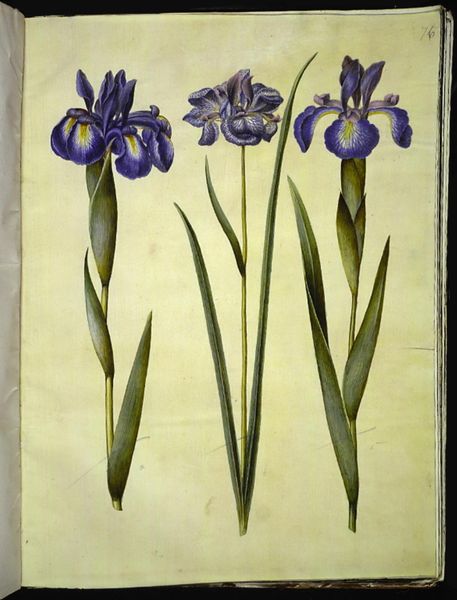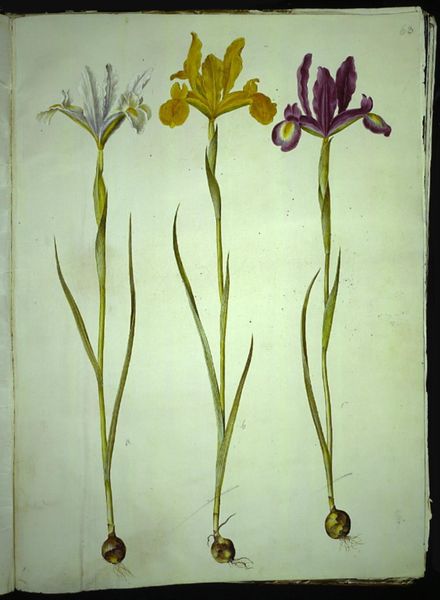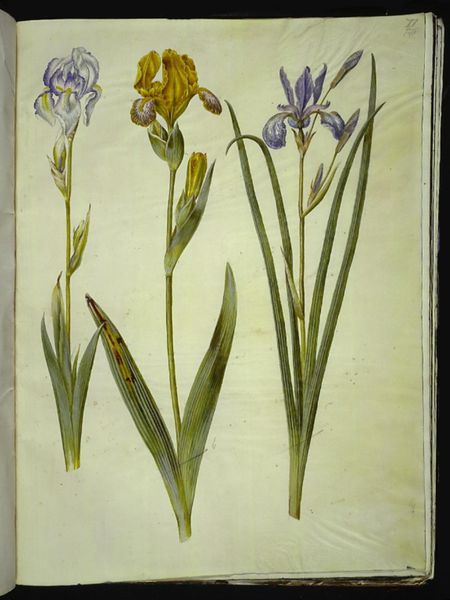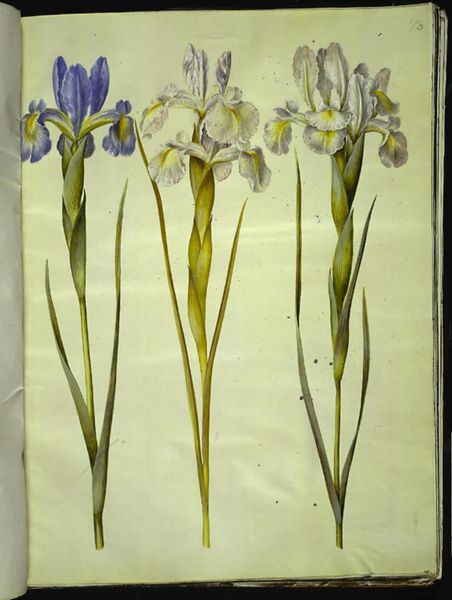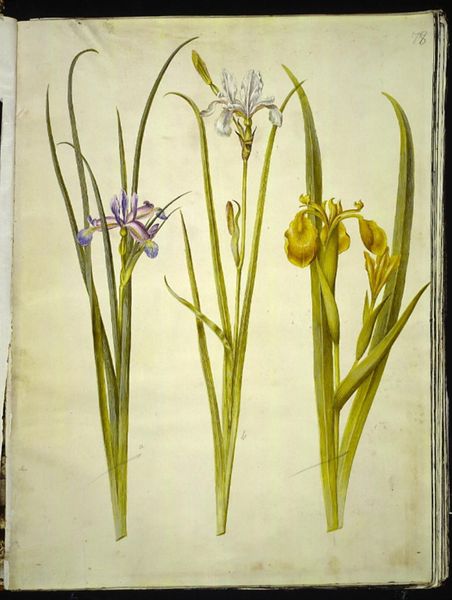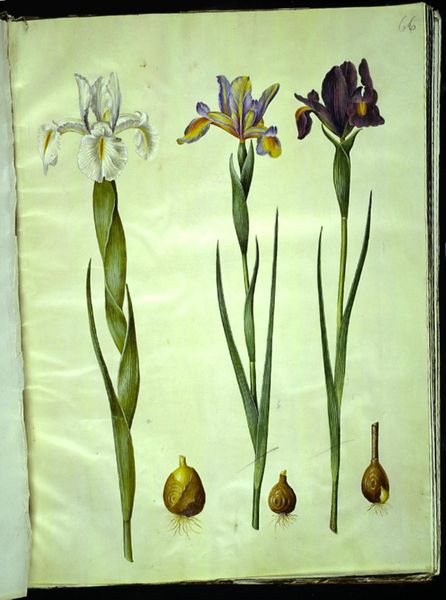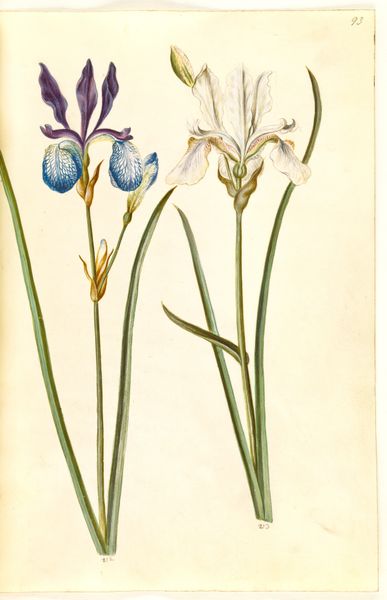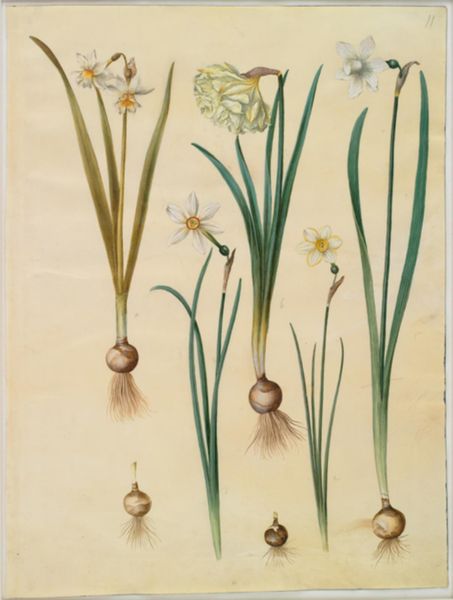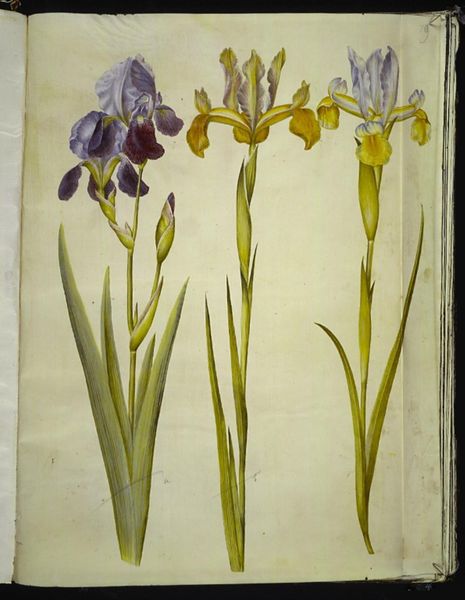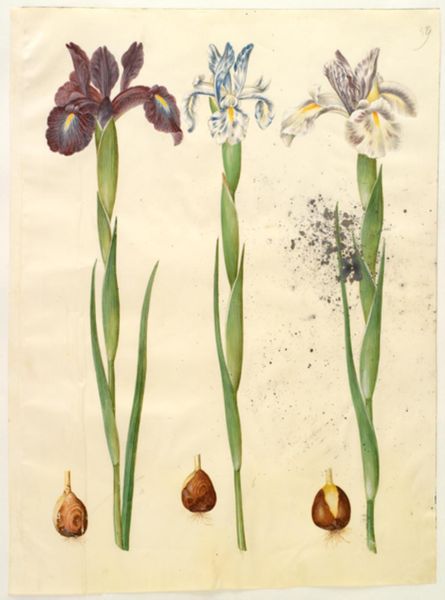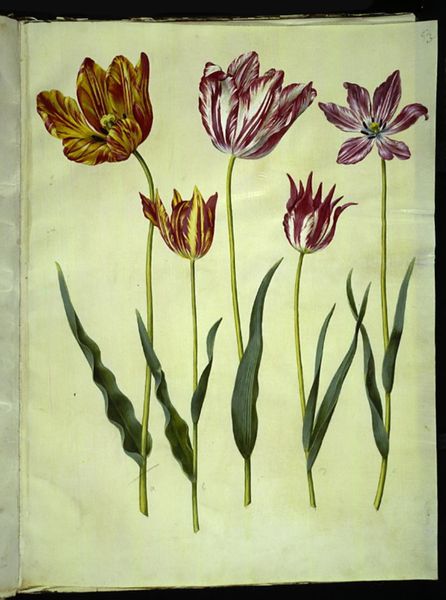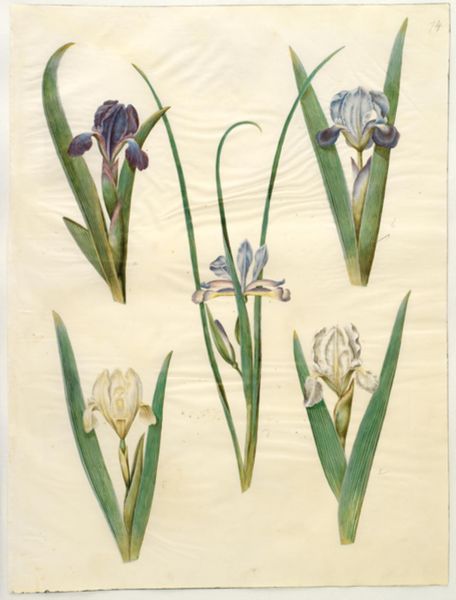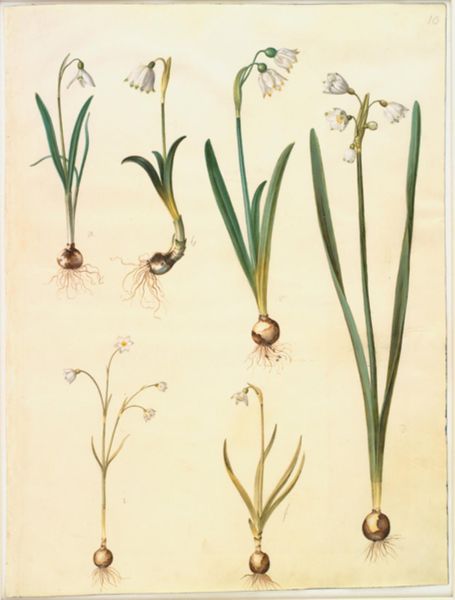
Iris xiphium (spansk iris) eller Iris latifolia (engelsk iris); Iris xiphium (spansk iris) 1649 - 1659
0:00
0:00
drawing, coloured-pencil, gouache, watercolor
#
drawing
#
coloured-pencil
#
water colours
#
gouache
#
watercolor
#
coloured pencil
Dimensions: 505 mm (height) x 385 mm (width) (bladmaal)
Curator: This sheet presents three iris specimens—identified as Iris xiphium or Iris latifolia—meticulously rendered in watercolor, gouache, and colored pencil between 1649 and 1659 by Hans Simon Holtzbecker. It's currently held in the collection of the SMK, Statens Museum for Kunst. Editor: Immediately striking is the rendering of these three bulbs, their stark stillness contrasting with the inherent vivacity of the iris. The image speaks to an intense interest in botanical accuracy, even fetishization, one might say. Curator: Holtzbecker's artistic process here is worth considering. We have a deliberate layering of different media, building form through delicate washes, and then using colored pencil to define contours. I find it telling that these are botanical illustrations, tied to empirical observation and documentation of natural specimens within controlled settings. Editor: Indeed, consider this period when trade and colonization flourished. Botanical art became inextricably linked with imperial expansion. Were these bulbs gathered locally or sourced through global exchange? Who was meant to have access to this rendering? Understanding the networks through which the iris and its depiction circulated becomes key to unraveling the social and economic fabric of the era. Curator: From a purely material perspective, the vibrancy of the watercolors, the careful rendering of textures – one sees the handmade paper itself contributing to the overall aesthetic. It is fascinating how such detail might’ve served a commercial interest, too, especially as color printing advanced in this period. Holtzbecker's studio practice itself existed at a critical juncture in this regard. Editor: It highlights the complex interplay of art, science, and power during the period of its creation. What we perceive as delicate renderings of floral forms are instead enmeshed in broader systems of resource extraction and control, revealing uncomfortable truths about the historical roots of present-day ecological crises. Curator: Thinking of how our present awareness informs our interpretation is valid here. We see botanical art shifting as material science developed. Holtzbecker's time sits right between older emblem books and scientific illustrations. Editor: True. By engaging with its history we acknowledge the many forms of labor embedded in this artifact—the grower, the merchant, the artist—and also open avenues for exploring crucial questions related to ownership, representation, and environmental responsibility. Curator: Absolutely. These drawings become portals into complex webs of material exchange. Editor: Leaving us much to contemplate, then.
Comments
No comments
Be the first to comment and join the conversation on the ultimate creative platform.
